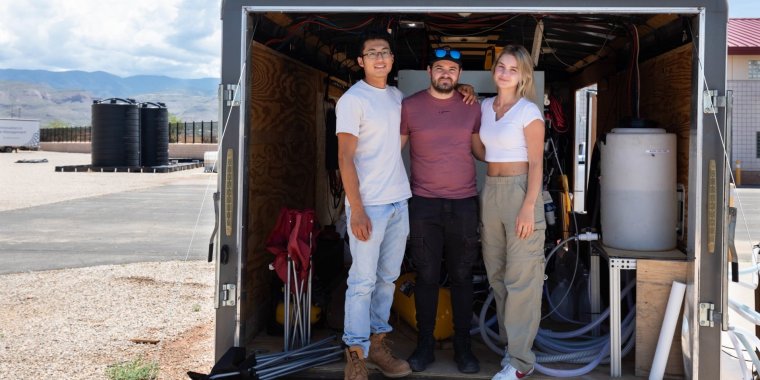| Technology |
Massachusetts Institute of Technology engineers tap access to battery-less desalination of more groundwater than ever before
Researchers showed, for the first time, the possibility of water desalination without necessarily installing a large battery on site or connecting the water desalination system to the power grid.

Jon Bessette, Shane Pratt, and Muriel McWhinnie (UROP) stand in front of the electrodialysis desalination system during an installation in July. Image: Shane Pratt/Wikinews
Engineers from Massachusetts Institute of Technology (MIT), in the United States, published a paper about new and inexpensive battery-less solar desalination plant technology.
To handle changes in electric current caused by weather variations, the new system involves adjusting desalination rates several times a second based on the detected changes in solar irradiance.
The researchers had tested a prototype in Brackish Groundwater National Desalination Research Facility in Alamogordo, New Mexico for several months, showed capability to desalinate an average of 5,000 liters of water per day.
The system is designed to process brackish groundwater, also known as brackish water, a type of groundwater that is more widespread, yet previously inaccessible due to technological limitations – an asset especially valuable in drought-affected regions inland which lack access to seawater, according to the report. (Wikinews)
YOU MAY ALSO LIKE





